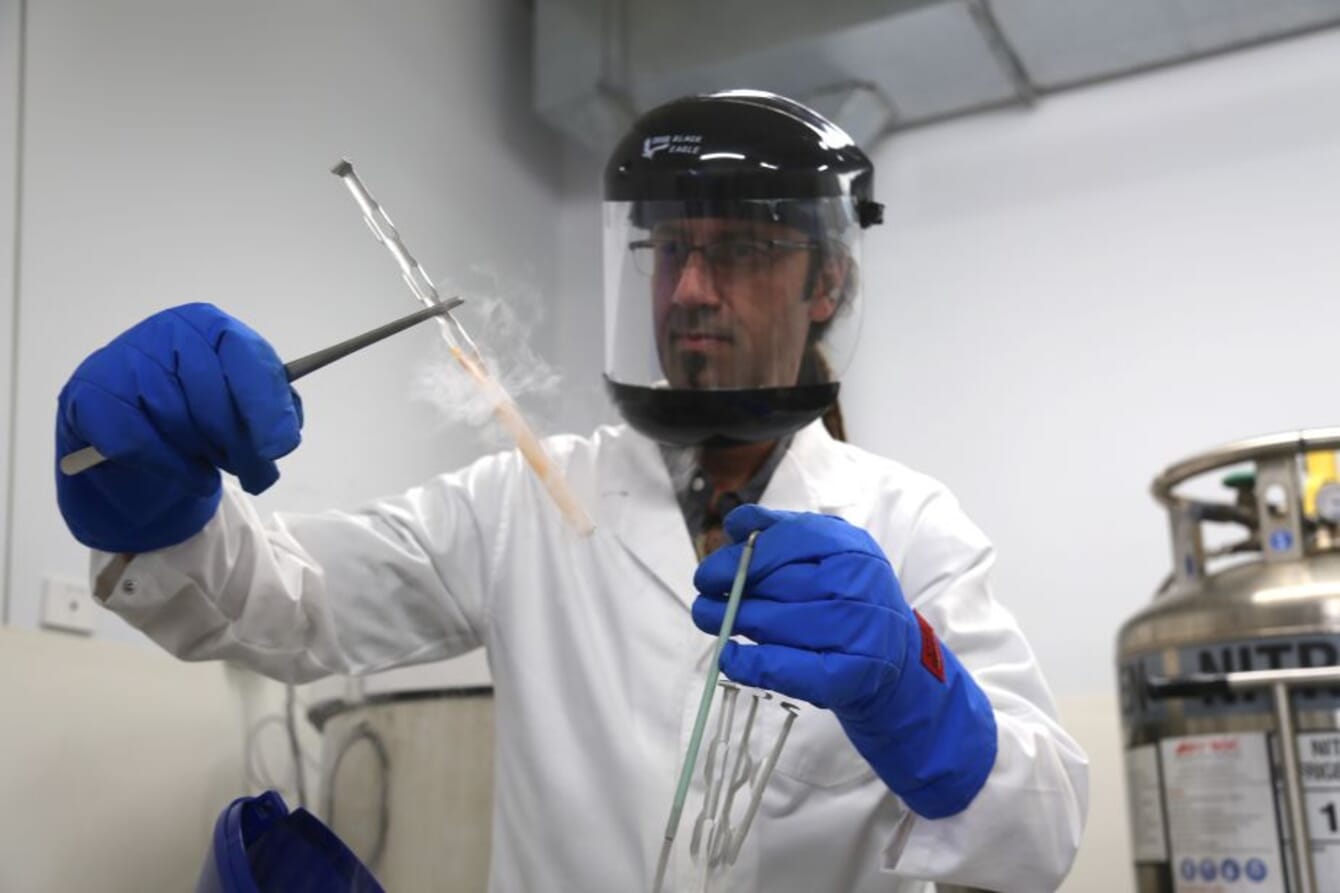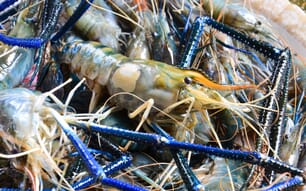
© JCU
Associate Professor Damien Paris from JCU’s Gamete and Embryology (GAME) Laboratory said wild-caught fish production has flatlined since the late 1980s, with more than 50 per cent of the world’s seafood – amounting to 82 million tonnes, worth over US$ 250 billion – now coming from aquaculture.
“Despite this, breeding technologies in aquaculture are a long way behind those in terrestrial farming. Improvements in broodstock and hatchery management are needed to intensify production if the industry is going to be able to support the growing global demand for animal protein,” said Dr Paris.
Dr Paris and colleagues have just published work in Reviews in Aquaculture and Aquaculture showing how advanced tools can be used to evaluate and freeze sperm from decapods (crabs, crayfish, lobster, etc) and barramundi, then fertilise females artificially.
While mass natural spawning is effective for producing barramundi, scientists know that not all barramundi sperm is equal, with some individuals producing much higher quality offspring.
“Fertility tools can identify infertile males or lead to improvements in diet and husbandry that ultimately improve sperm quality of broodstock, while banking stocks of frozen sperm reduces the need and significant cost of housing large numbers of breeding males,” said Dr Paris.
However, the technology is still in its infancy in many aquaculture species.
“Advanced fertility monitoring tools and assisted breeding technologies are needed if Australian farms are going to remain competitive in the rapidly changing aquaculture sector,” said Dr Paris.
According to Dr Paris, sperm freezing improves the worldwide trade and distribution of valuable aquaculture genetics. Coupled with artificial fertilisation, it can reinfuse important genes back into females to improve disease-resistance, increase genetic diversity from wild-caught broodstock or accelerate selective breeding.
Dr Paris has partnered with other researchers Professor Dean Jerry, Associate Professor Chaoshu Zeng, Adrien Marc, Jon Irish Aquino and Nur Un Nesa, as well as industry partners Mainstream Aquaculture and Australian Crayfish Hatchery to pioneer development of sperm, egg and embryo technologies for the barramundi and crustacean industries.
“The GAME Lab at JCU has a suite of sophisticated molecular fertility tools and assisted reproductive technologies, with experience adapting these to a diversity of terrestrial and aquatic animal species. It’s the sort of thing the industry is going to need if aquaculture is going to meet the demands placed upon it and if Australian producers want to play a big part in this,” said Dr Paris.




